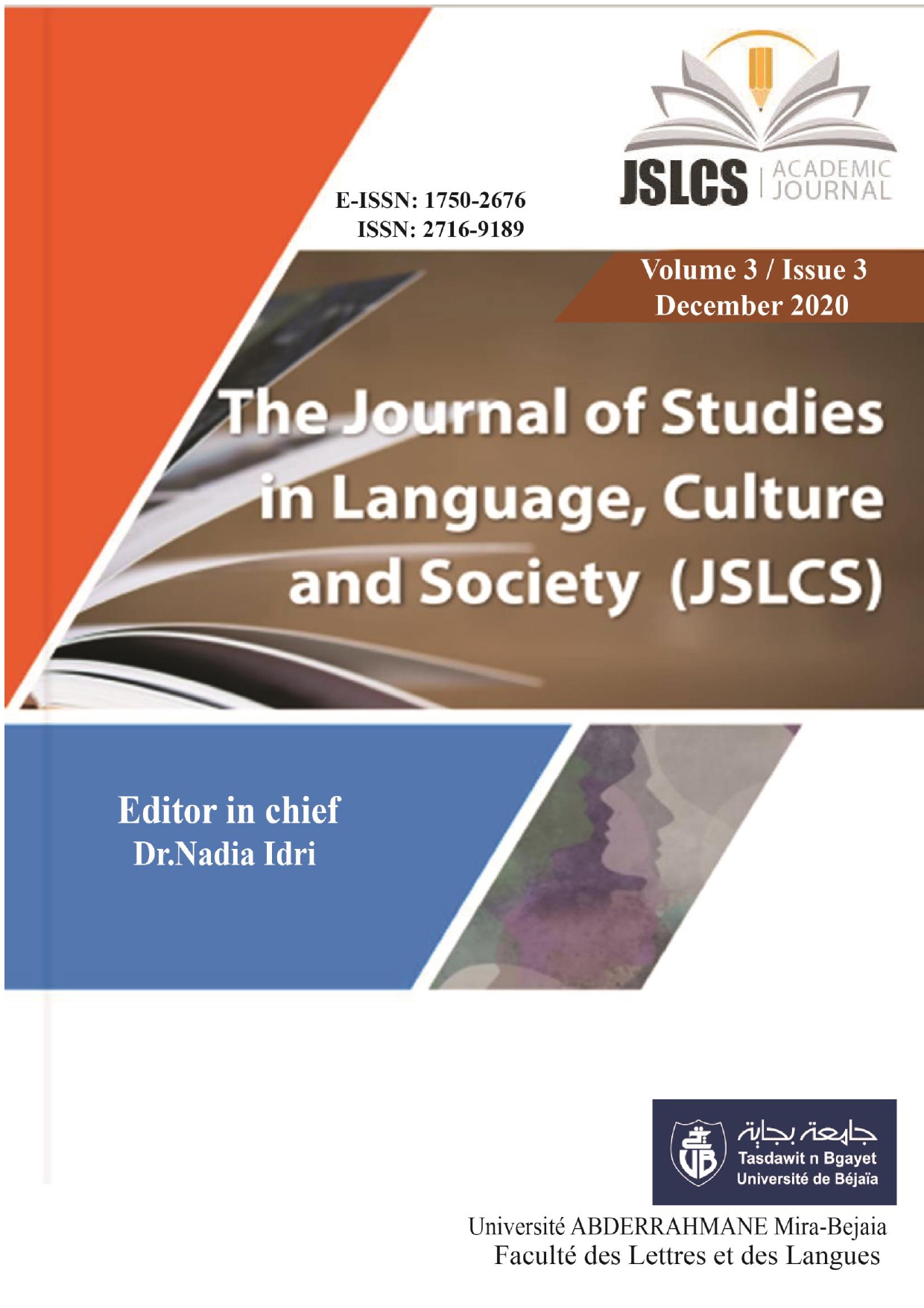Integration Of The Transitivity Model To Probe Gender Issues In Literary Texts And Its Implication On Teaching English As A Foreign Language
Keywords:
culture learning, gender, literature didactics, ideational meta-function, processes, TEFLAbstract
The topicality of this paper lies in the effects of the linguistic utilization of literature that reflects social realities, mainly the crave of discerning complications on the relationship between men and women, inside a foreign language classroom. The aim of the present paper is to study the contribution of the Linguistic Analysis of literary works for unveiling the secrecy of gender dichotomy to the teaching of English as a Foreign Language. Hence, it is the aim of this paper to develop a working systemic-functional model through proposing lexico- grammatical strategies for the ideational construal in meaning-making. It is based on the analysis of verbs (processes) used by male and female characters selected from some literary works, attached to different cultural backgrounds. This study postulates that analysis of language choice serves as a means to enable foreign language learners have an obvious reflection over gender-specific issues to enhance culture learning. Therefore, we recommend that the aforesaid framework can be utilized as a pedagogical tool in teaching EFL to improve the dynamics of socio-cultural practices taking place in classroom learning context.
References
- Burton, D. (1982). Through glass darkly: through dark glasses. In R. Carter (Ed.), Language and literature: An introductory reader in stylistics (pp. 194–214). London: Allen & Unwin.
- Brown, G. & Yule, G. (1983). Discourse analysis. Cambridge University Press
- Conrad, J. Heart of darkness. Planet PDF http://www.planetpdf.com/
- Cornill, D., & Volkmann, L. (2007). Gender studies and foreign language teaching. Narr Francke Attempto Verlag GmbH+Co. KG
- Donnerstag, J., In. Cornill, H. & Volkmann, L. (2007). Gender studies and foreign language teaching. Narr Francke Attempto Verlag GmbH+Co. KG
- De Saussure, F. (1915). Course in general linguistics. McGraw-Hill Book Company
- Eliot, G. Middlemarch. http://www.planetpdf.com/
- Eggins, S. (2004). An introduction to systemic functional linguistics. (2nd edition). Continuum International Group
- Halliday, M., & Matthiessen, C. (2004). An Introduction to Functional Grammar. (3rd edition). Hodder Arnold
- Hofstede, G. (2011). Dimensionalizing cultures: The hofstede model in context. Online Readings in Psychology and Culture, 2(1). https://doi.org/10.9707/2307-0919.1014
- McCrocklin, S., & Slater, T. (2017). A Model for Teaching Literary Analysis Using Systemic Functional Grammar. Texas Journal of Literacy Education. Vol.5 (1). pp 81-96
- Mills, S. (1995). Feminist stylistics. Routledge.
- Norton, & Pavlenko, (2004). In Cornill & Volkmann. (2007). Gender studies and foreign language teaching. Narr Francke Attempto Verlag GmbH+Co. KG
- Sapir, E. (1921). Language: An introduction to the study of speech.
- Wales, K. (1994). Feminist linguistics in literary criticism. D.S.Brewer.
- Widdowson, H., G. (2007). Discourse analysis. Oxford University Press.
- Wood, J., T. (2009). Gendered lives: Communication, gender and culture, 8th edition. Wadsworth Cengage Learning.








